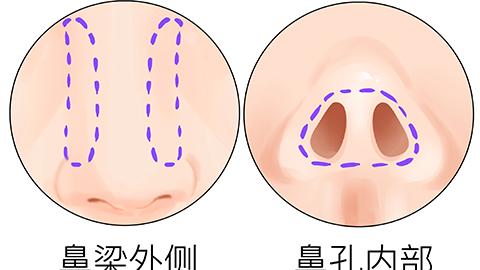What are the methods to reduce the size of a bulbous nose?
Generally speaking, "garlic nose" refers to a bulbous nasal tip. A bulbous nose can be reduced in appearance through dietary adjustments, daily care and massage, autologous cartilage nasal tip augmentation, septal cartilage nasal tip augmentation, and nasal tip reduction surgery. Specific details are as follows:

1. Dietary Adjustments
Consuming foods rich in vitamin C and collagen, such as fresh fruits and vegetables, may help improve the appearance of a large nose. Vitamin C contributes to healthy skin, while collagen enhances skin elasticity.
2. Daily Care and Massage
Regular nasal cleansing and appropriate massage can promote blood circulation, reduce swelling and inflammation, and thereby help reduce the size of the nasal tip.
3. Autologous Cartilage Nasal Tip Augmentation
This procedure involves harvesting rib or ear cartilage from the patient, processing it, and then implanting it into the nasal tip to create a more defined contour, thereby visually reducing the overall size of the nose. The general reference price for autologous cartilage nasal tip augmentation is 5,000–25,000 yuan per session. Improvement is typically noticeable 3–6 months after surgery, although mild swelling and pain may occur.
4. Septal Cartilage Nasal Tip Augmentation
This procedure involves using a segment of cartilage harvested from the patient's nasal septum, which is then implanted into the nasal tip to enhance definition and visually reduce its size. The general reference price for septal cartilage nasal tip augmentation is 5,000–10,000 yuan per session. Improvement is typically noticeable 1–3 months after surgery, although mild pain and swelling may occur.
5. Nasal Tip Reduction Surgery
This surgical procedure involves making incisions inside the nostrils, removing excess tissue and fat from the nasal tip, and then suturing the area to achieve a smaller nasal tip. The general reference price for nasal tip reduction surgery is 5,000–10,000 yuan per session. Improvement is typically noticeable 3–6 months after surgery, although symptoms such as redness and pain may occur.
It is recommended to visit a reputable hospital and undergo procedures under the guidance of qualified physicians to ensure effectiveness and safety. Maintaining nasal hygiene and avoiding touching or scratching the nose is important to prevent infection.




